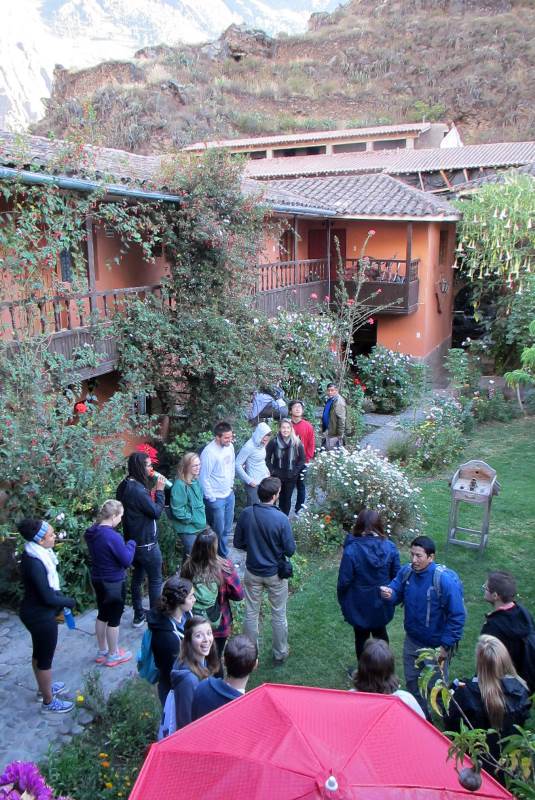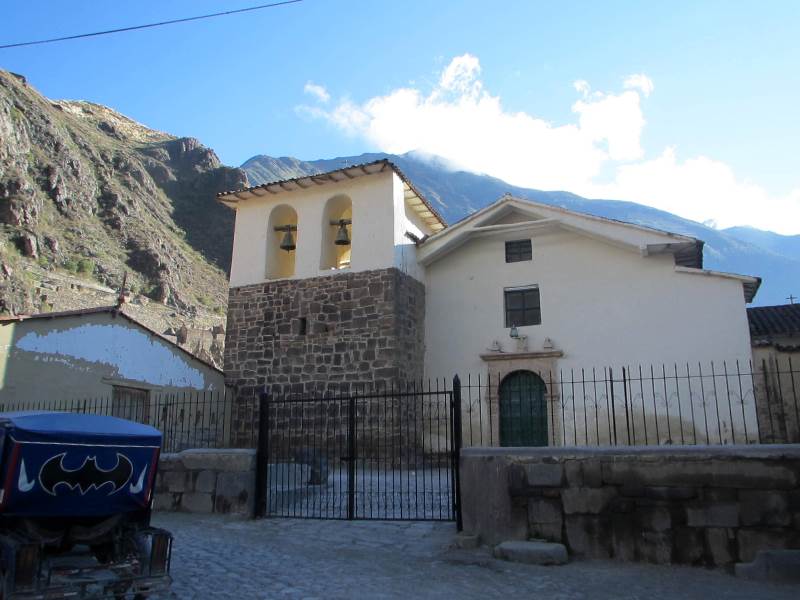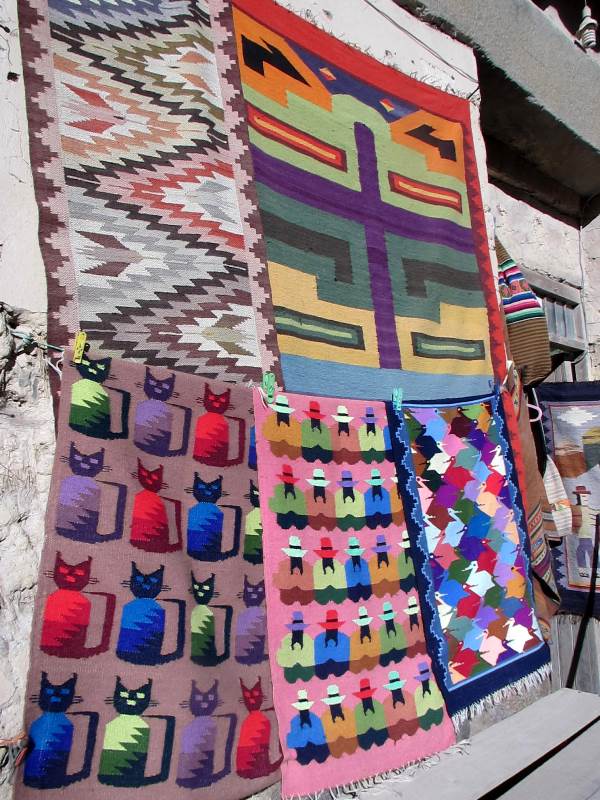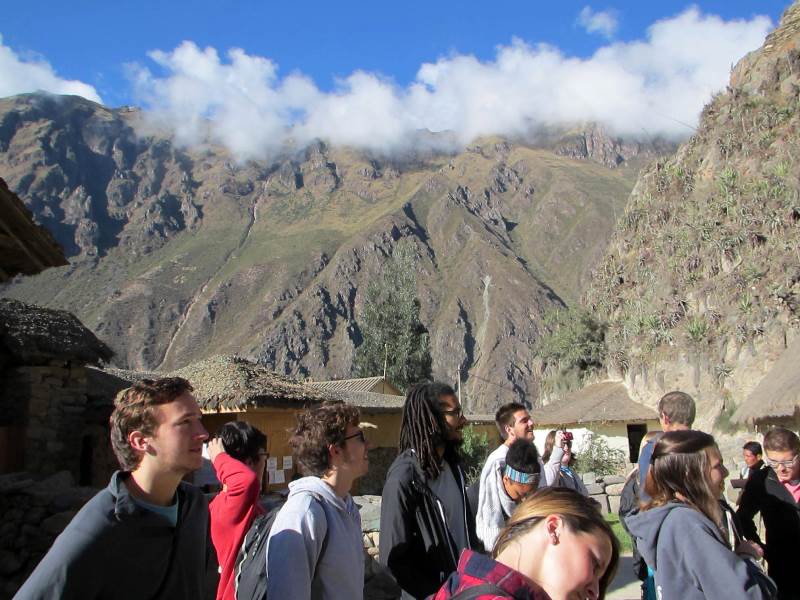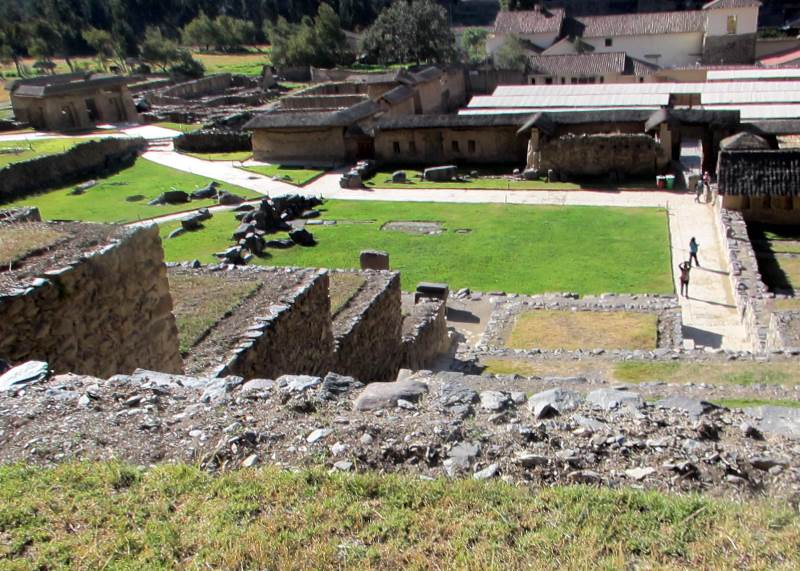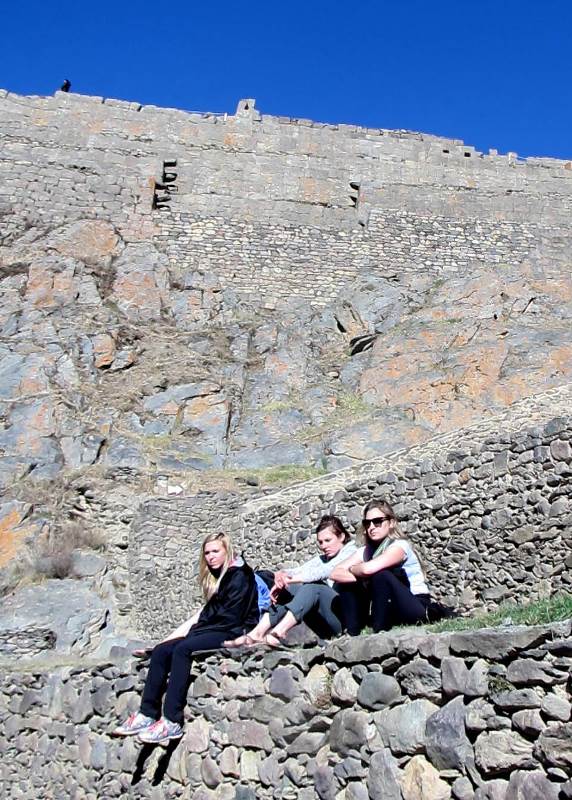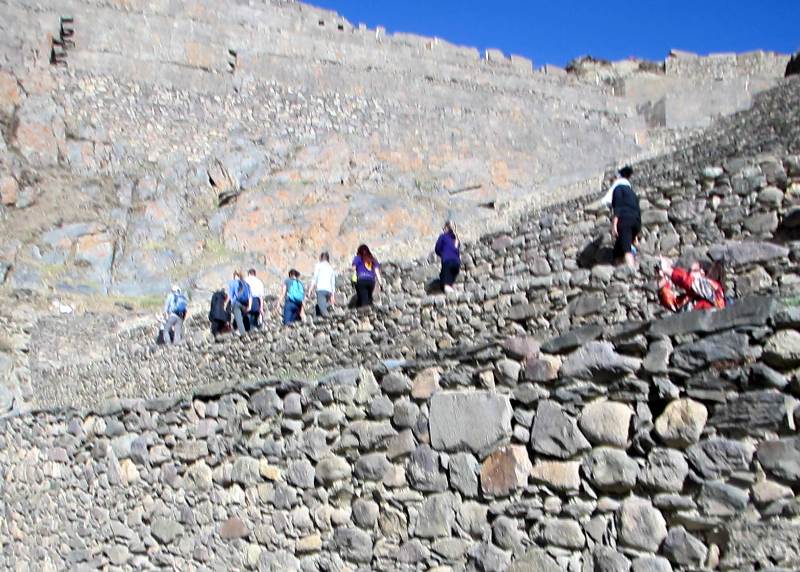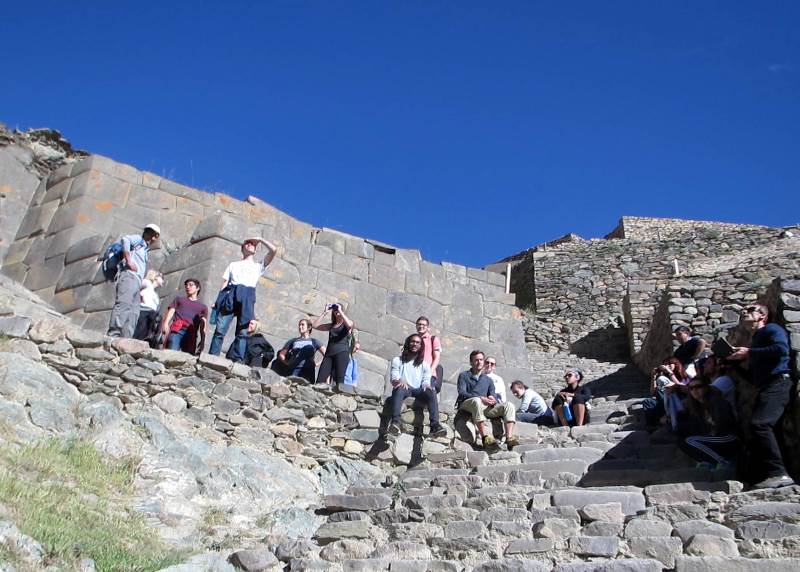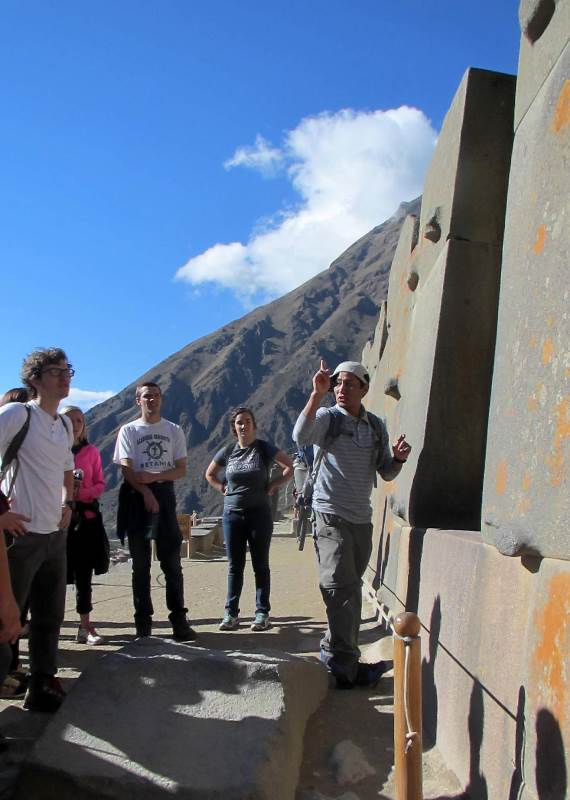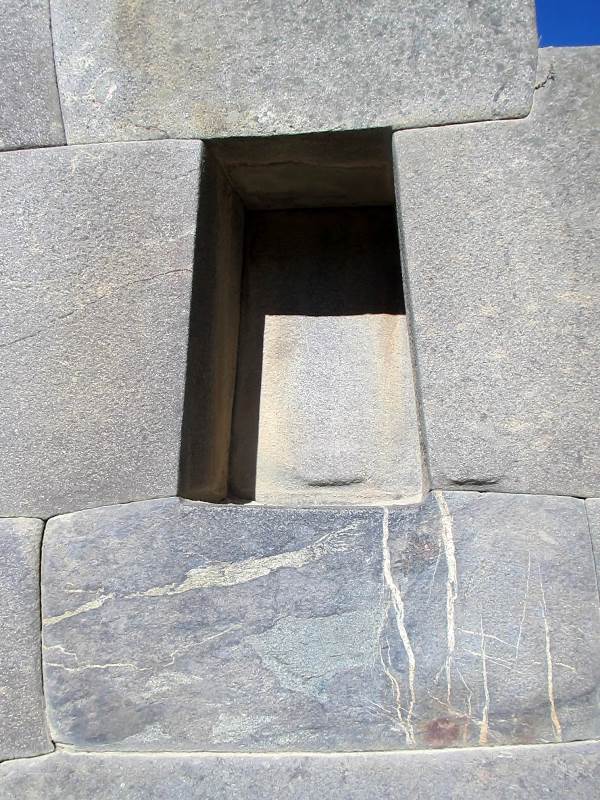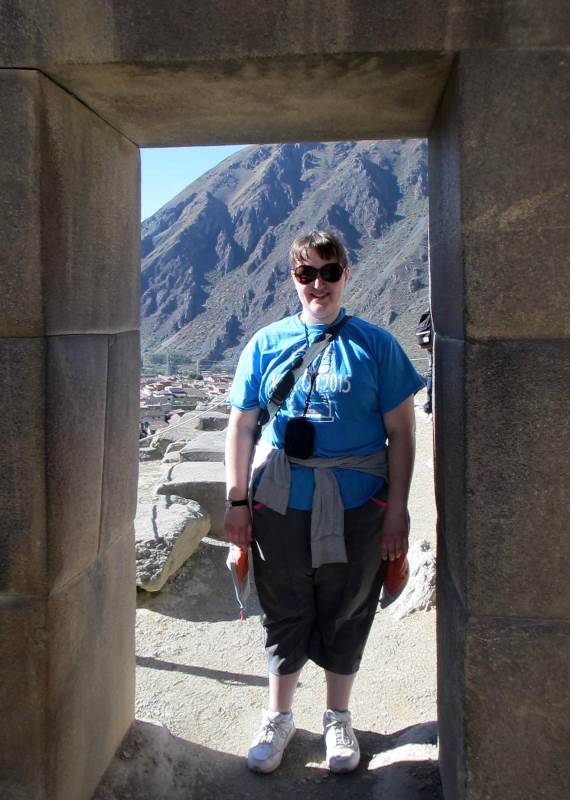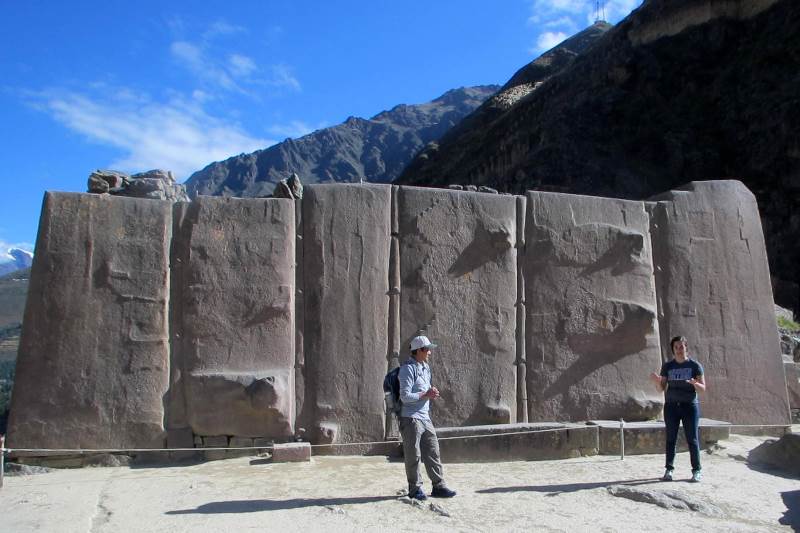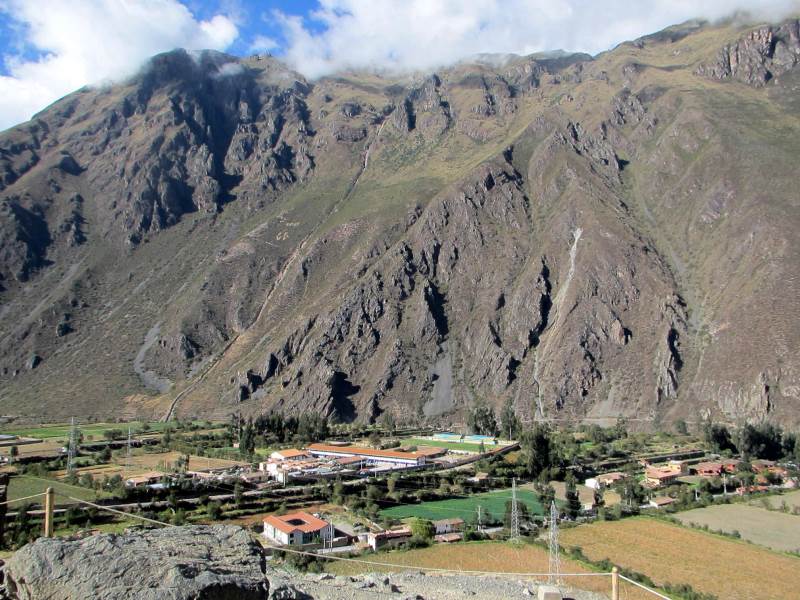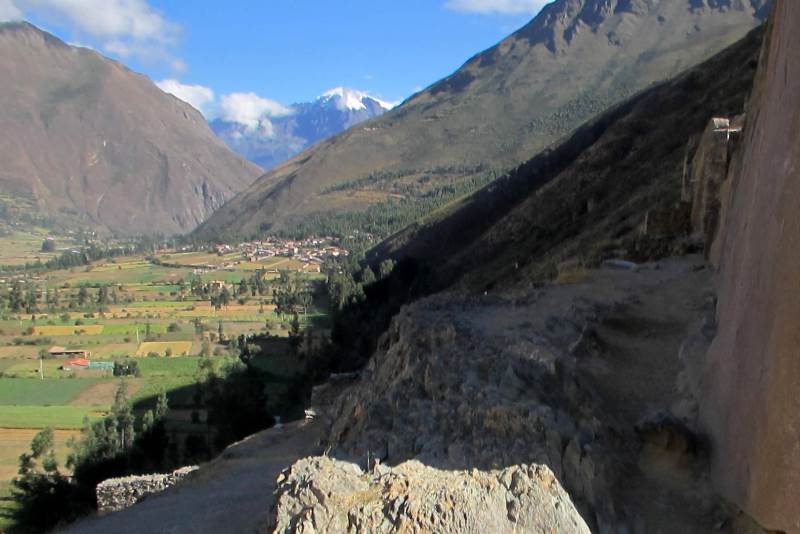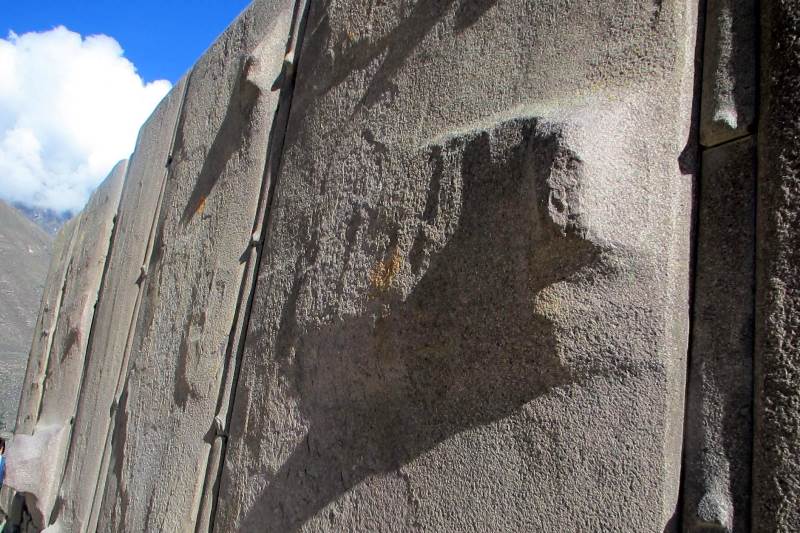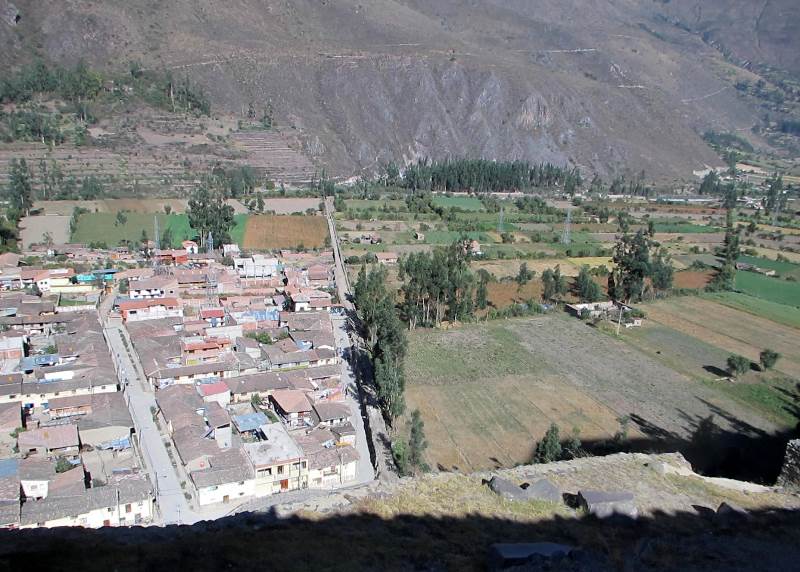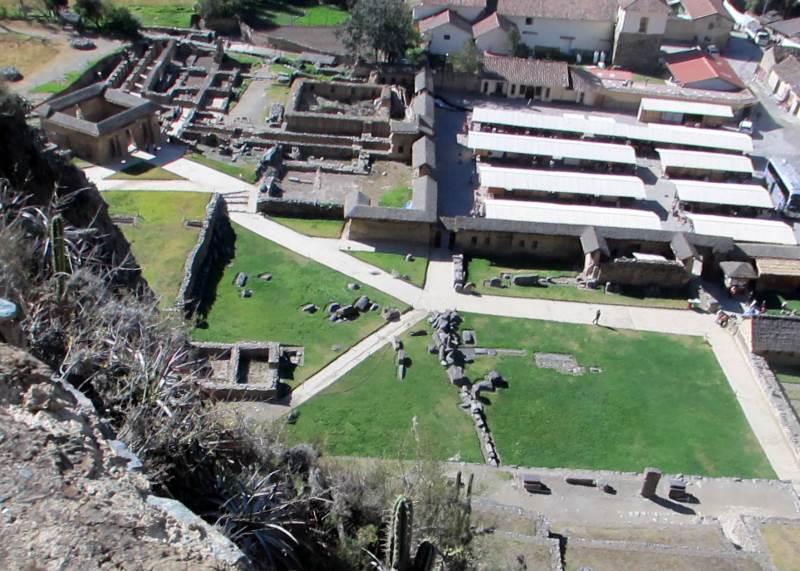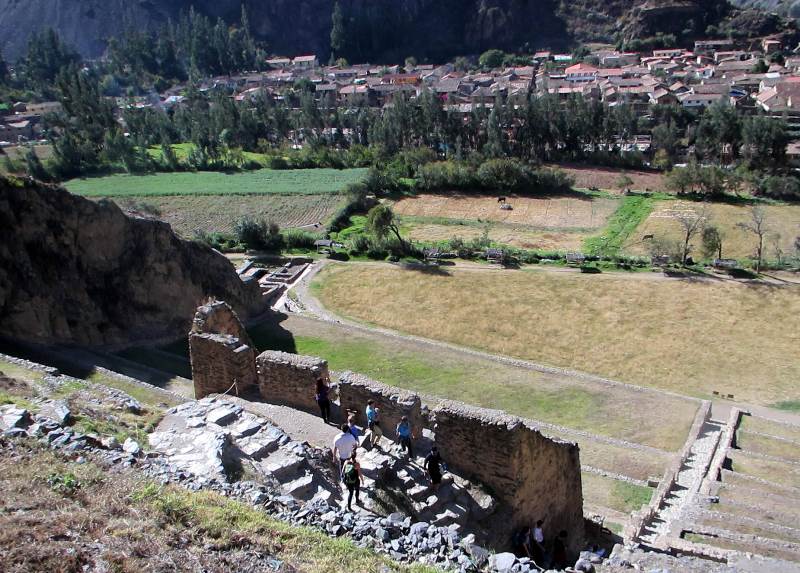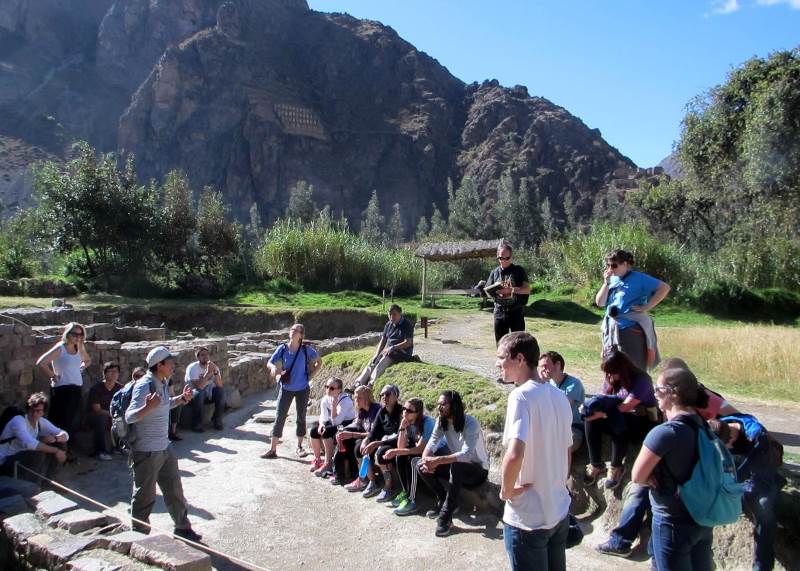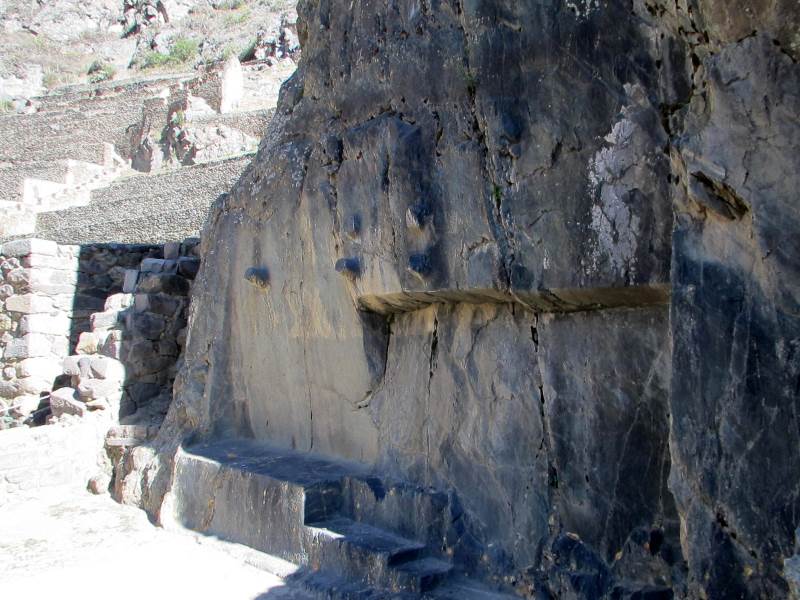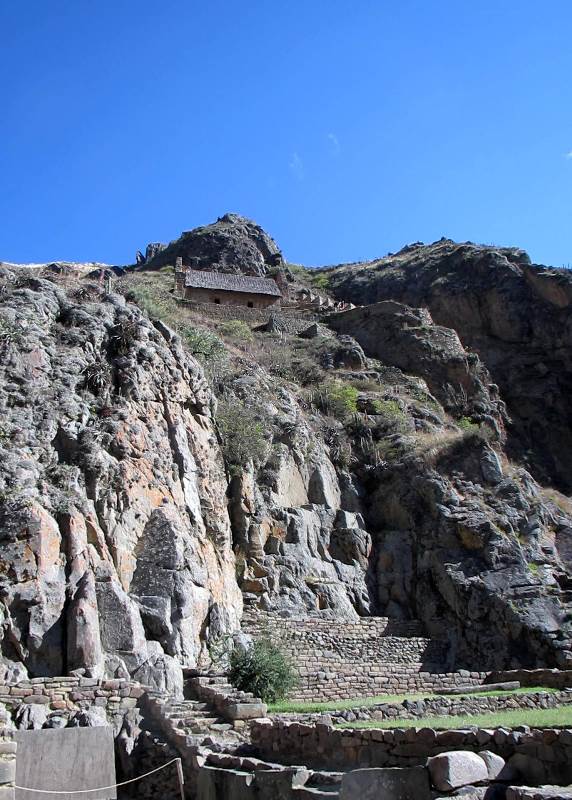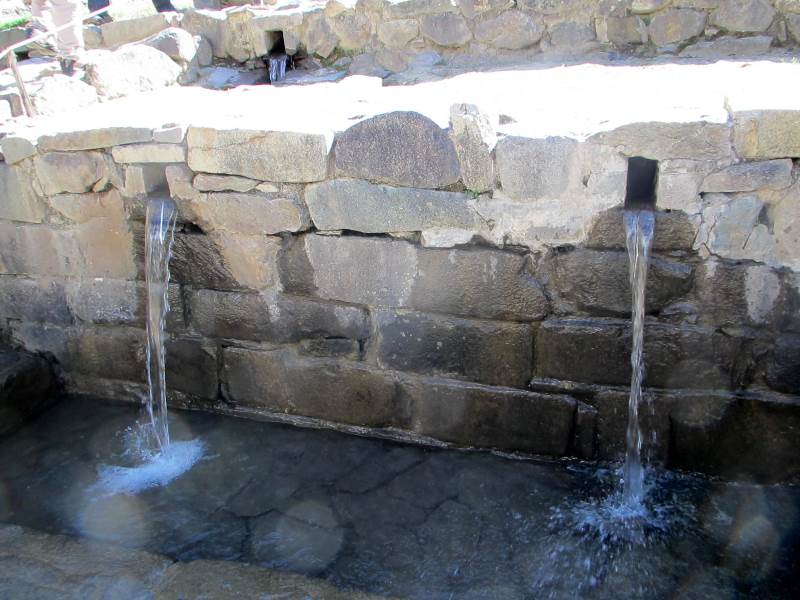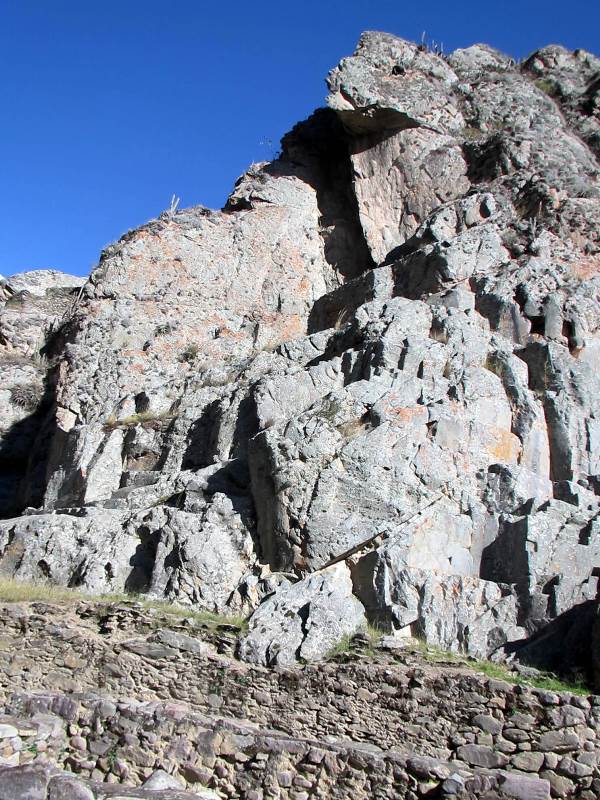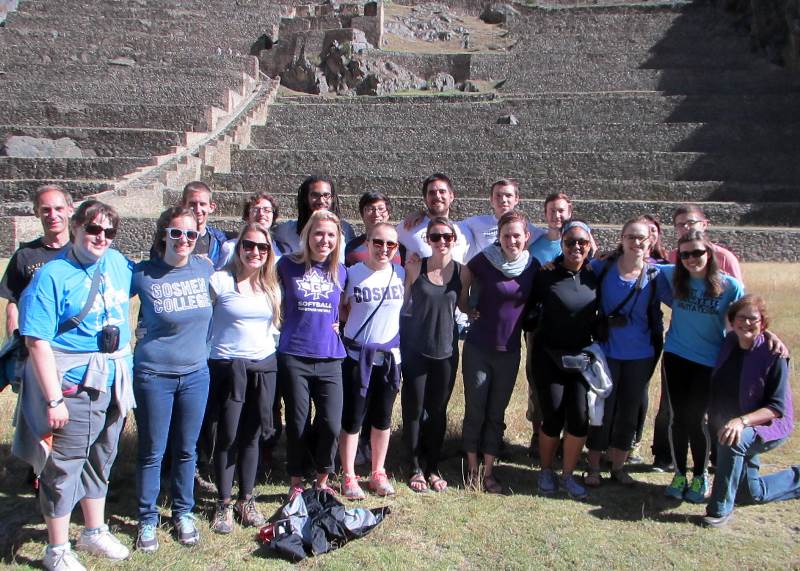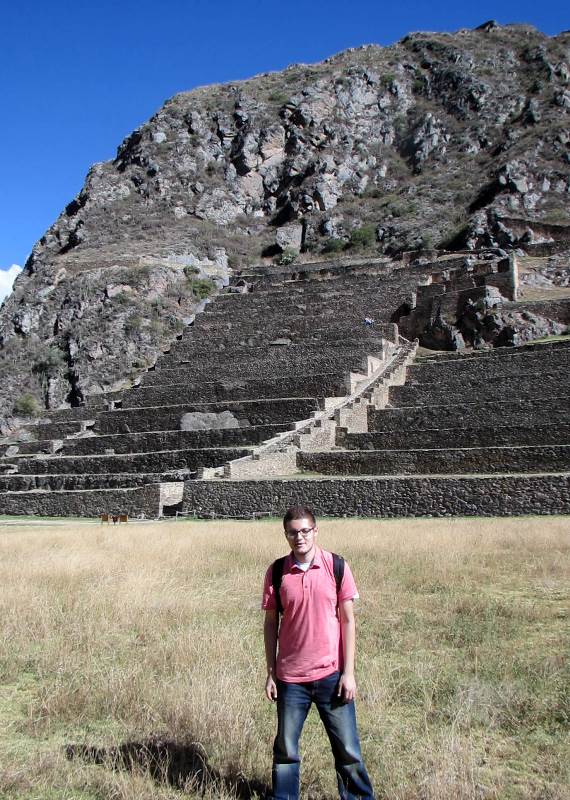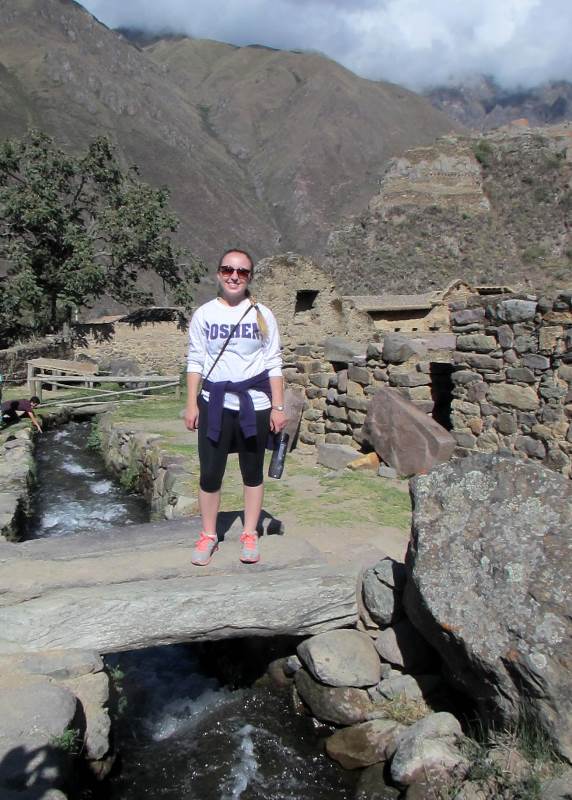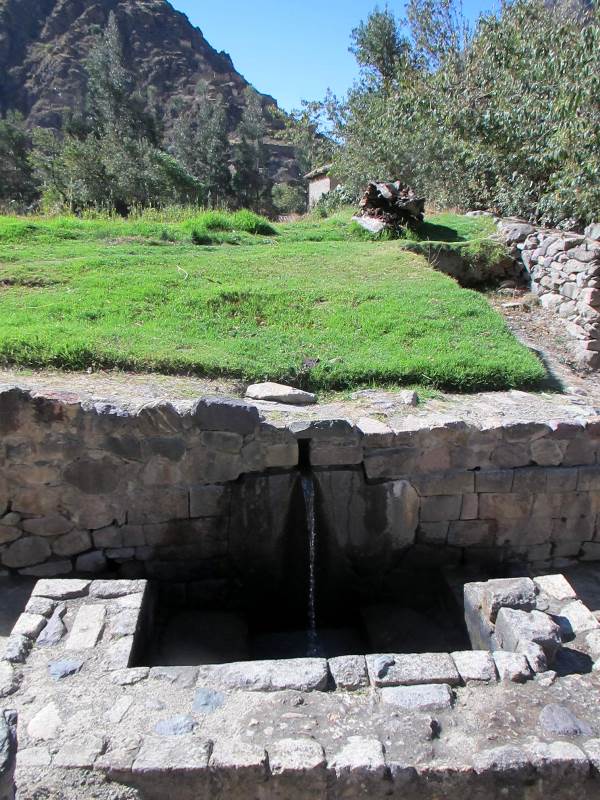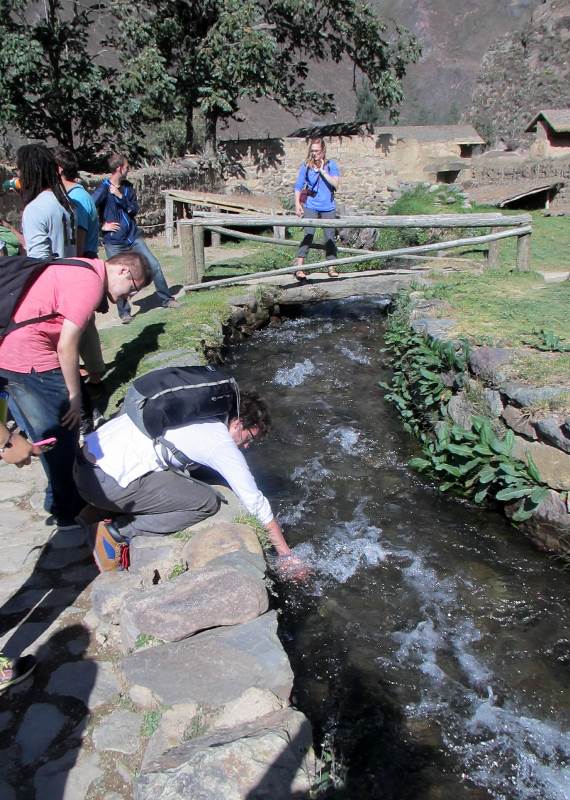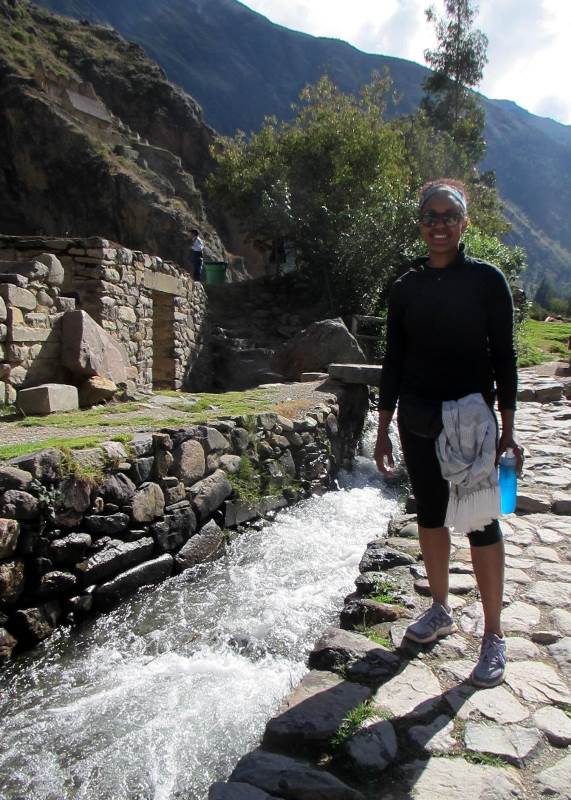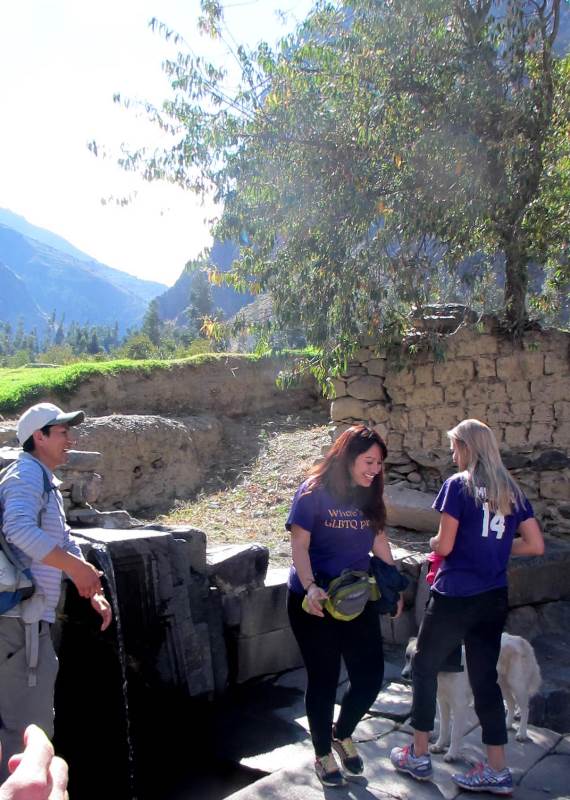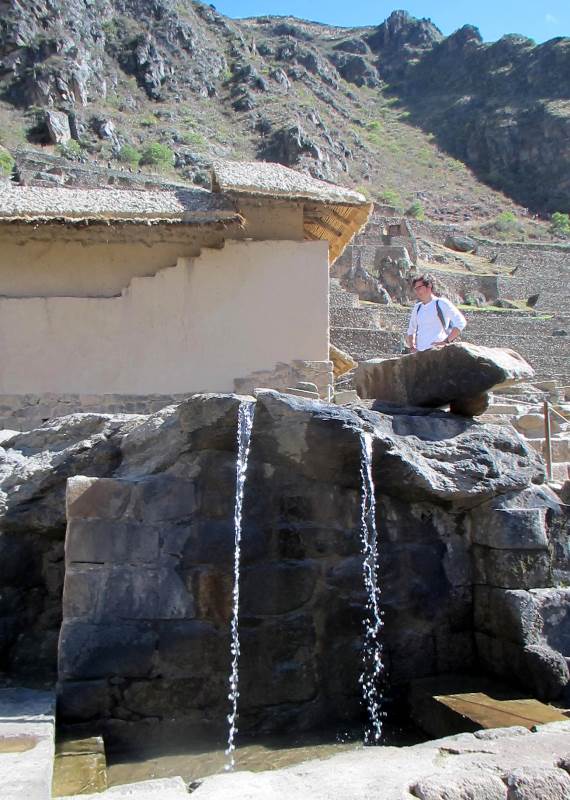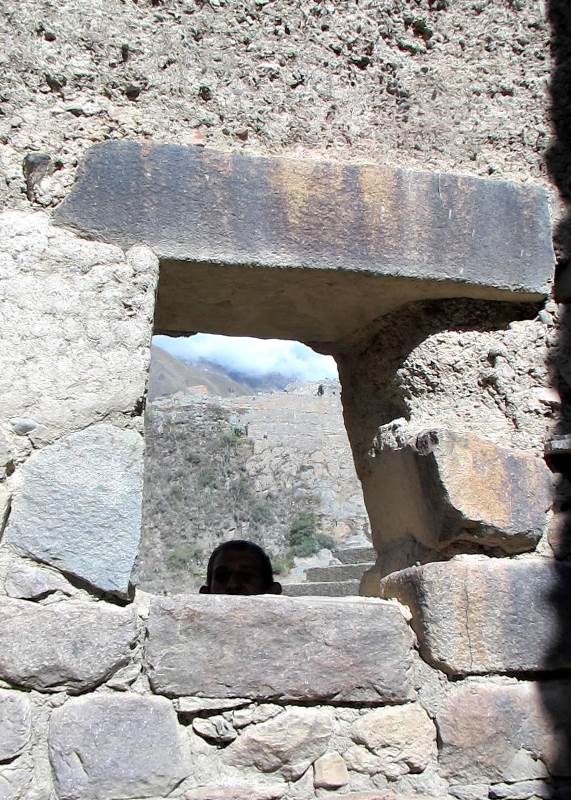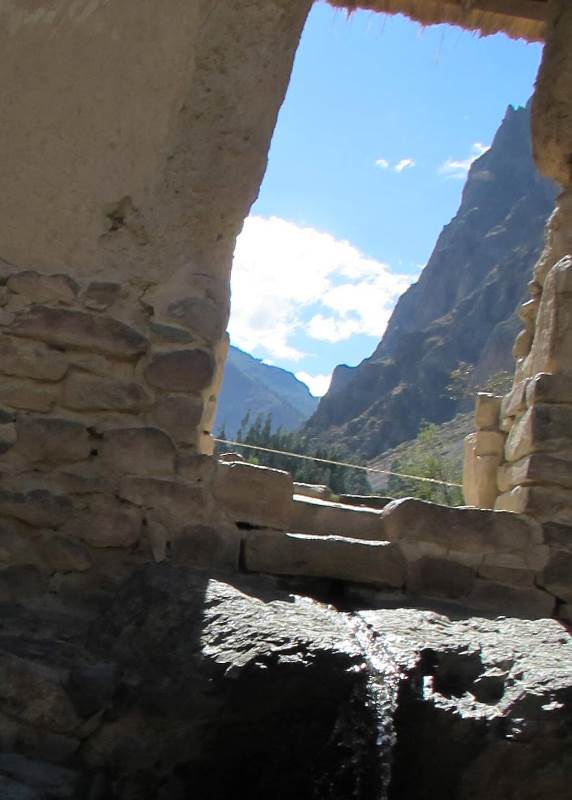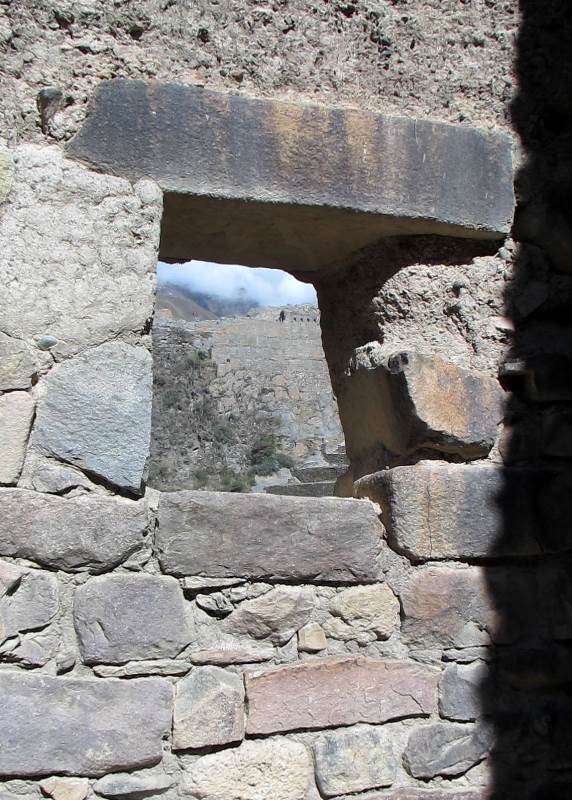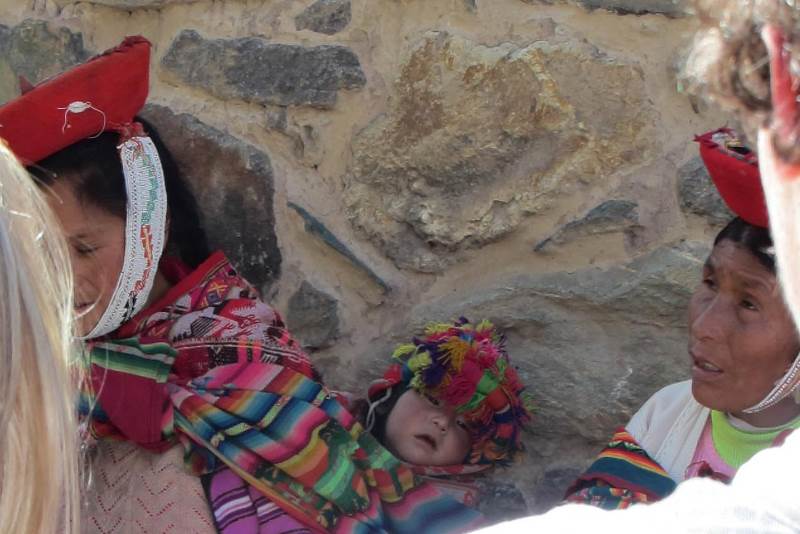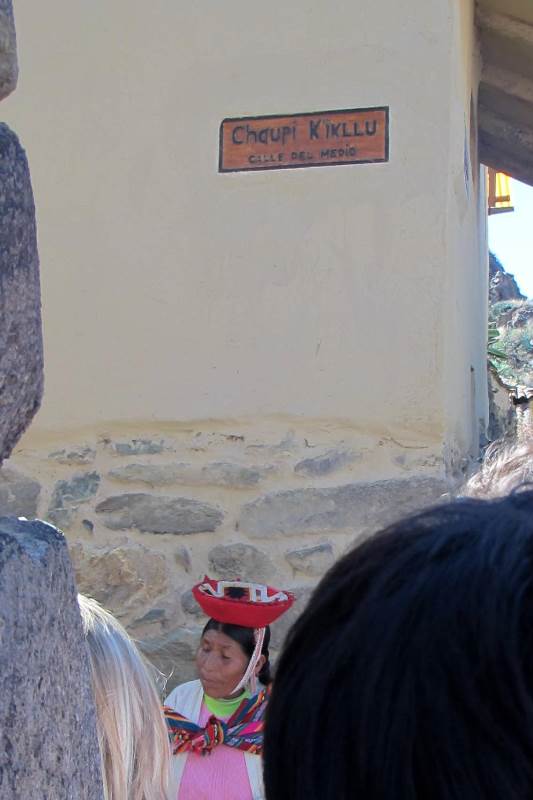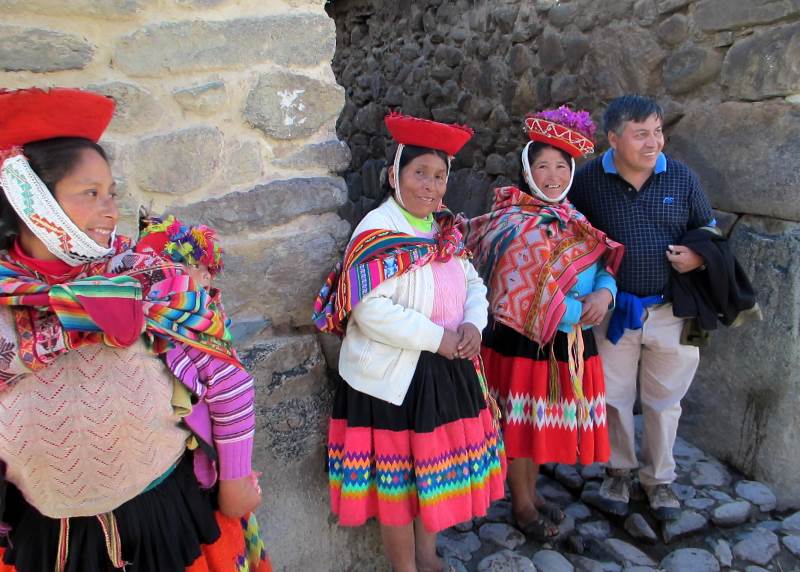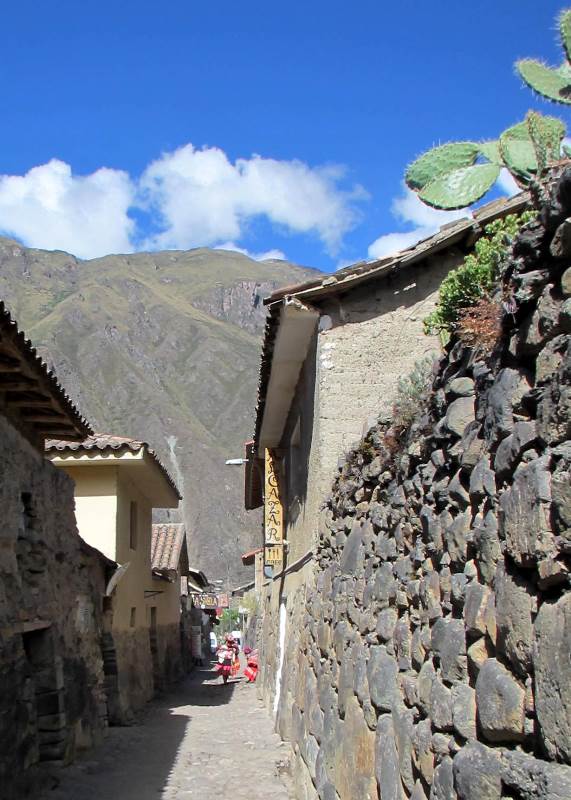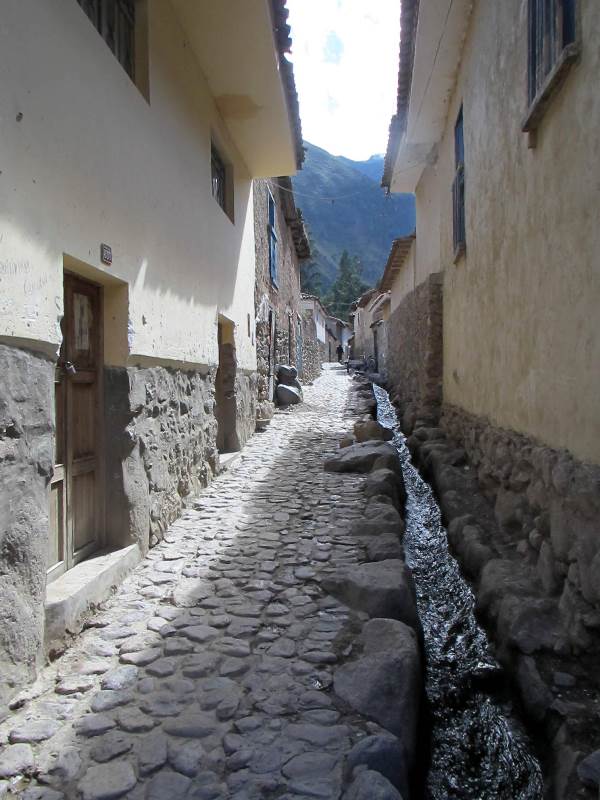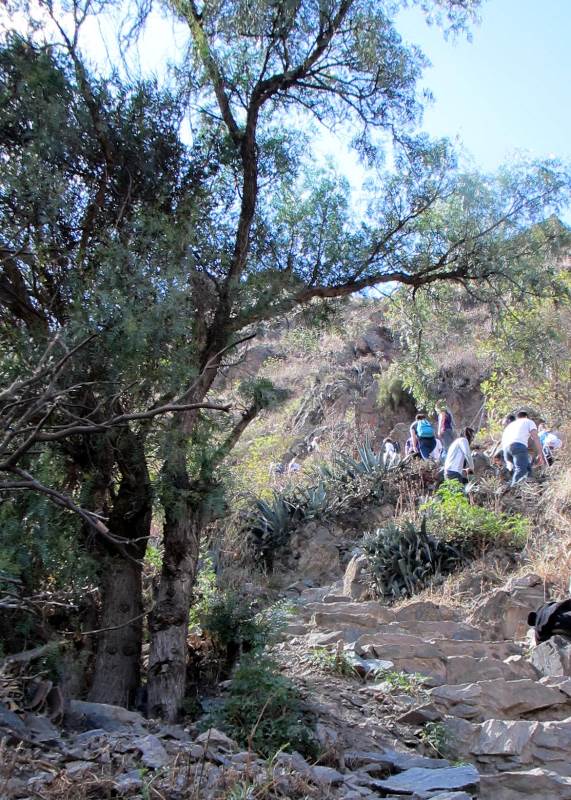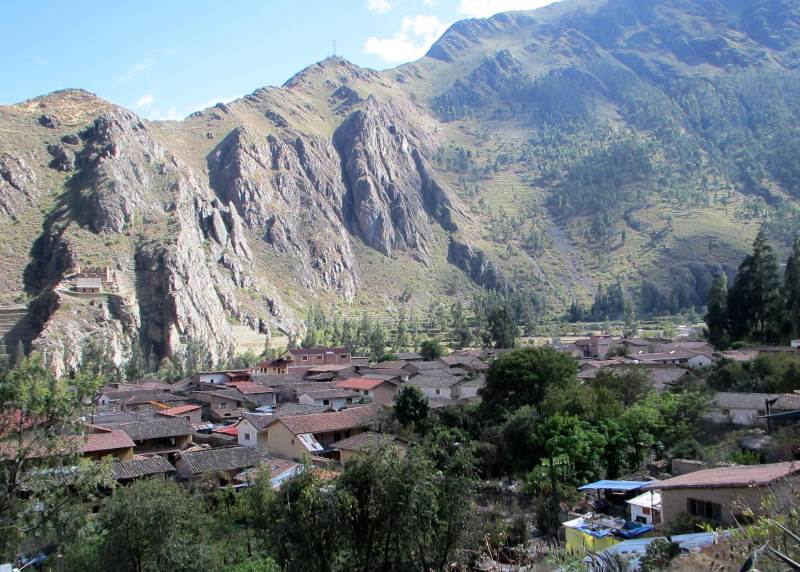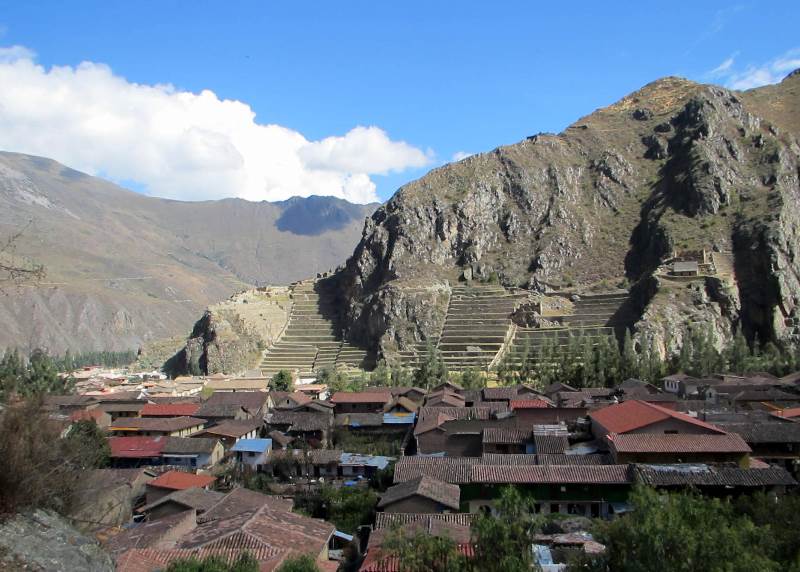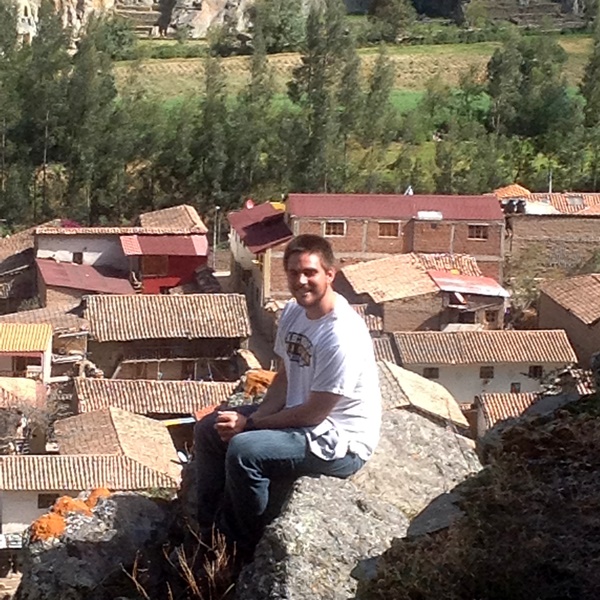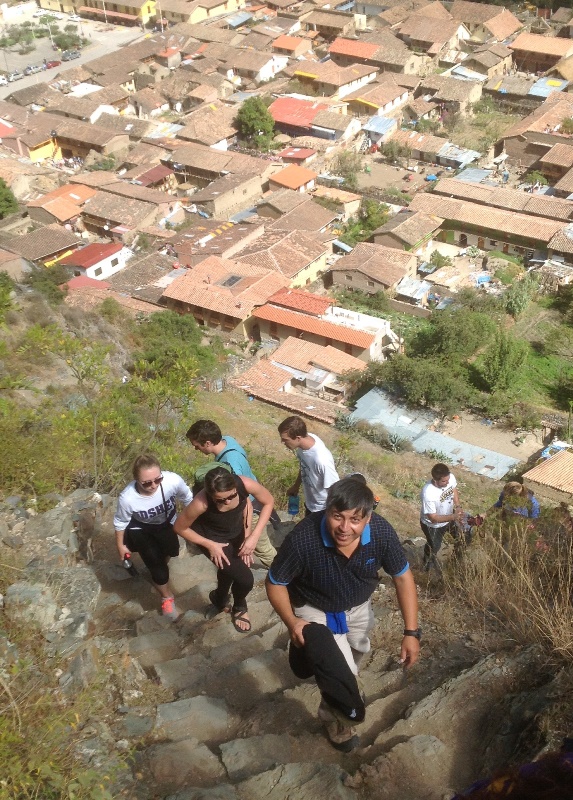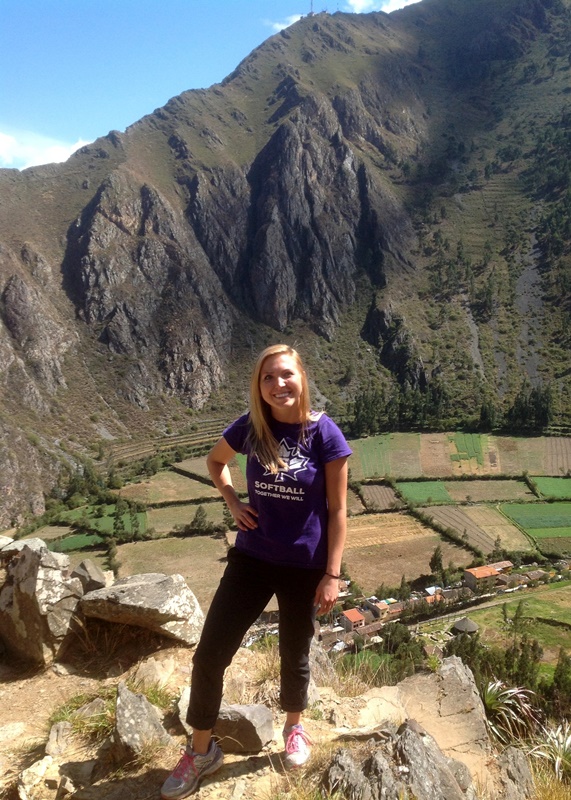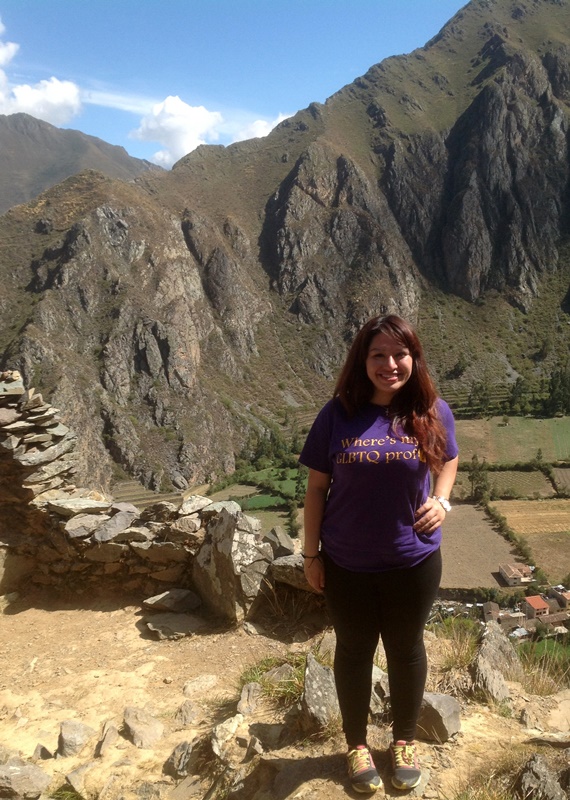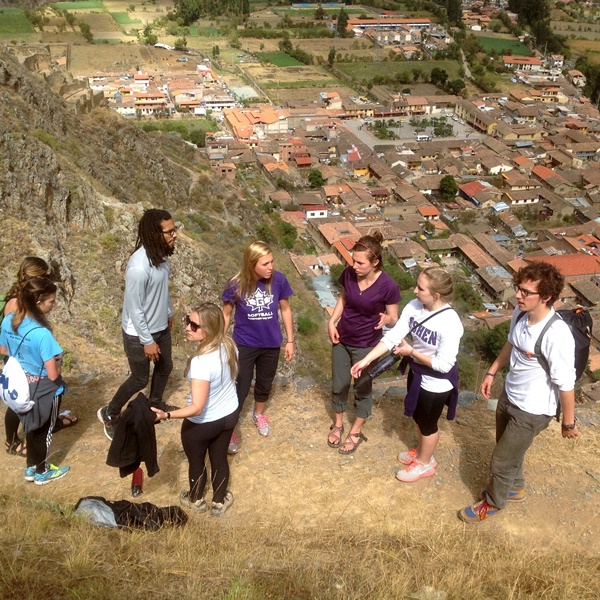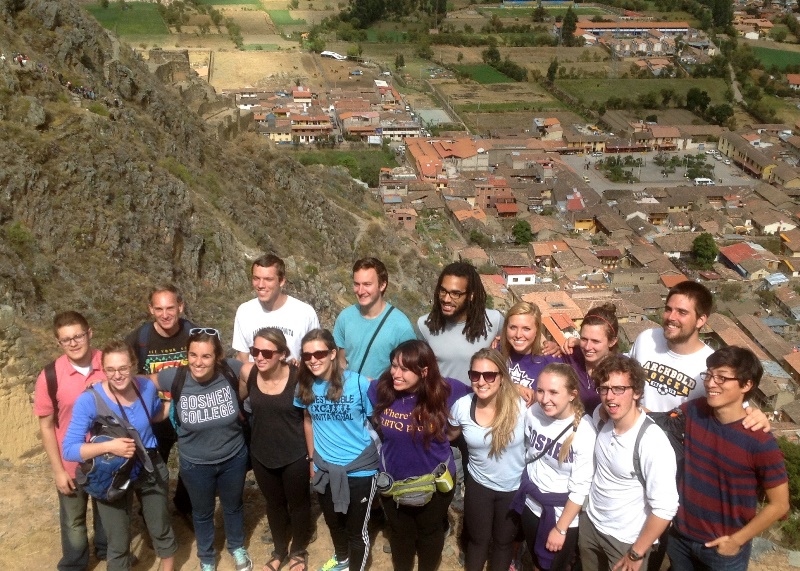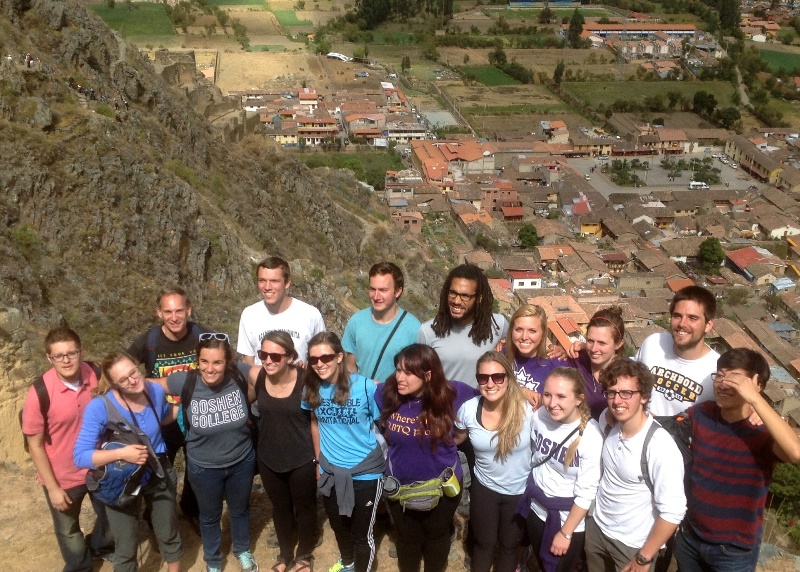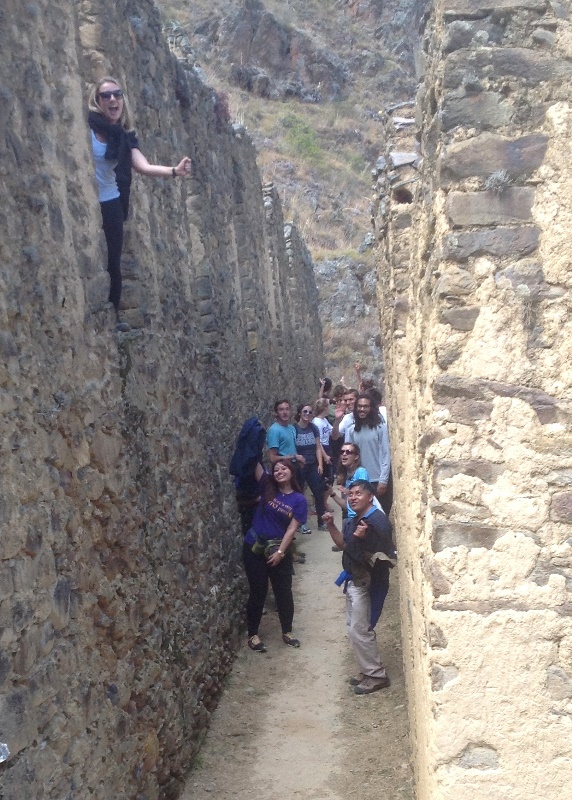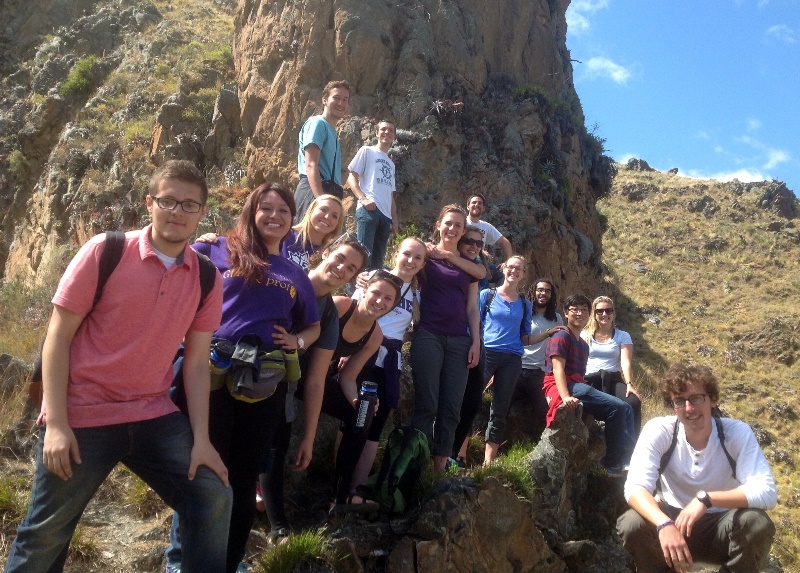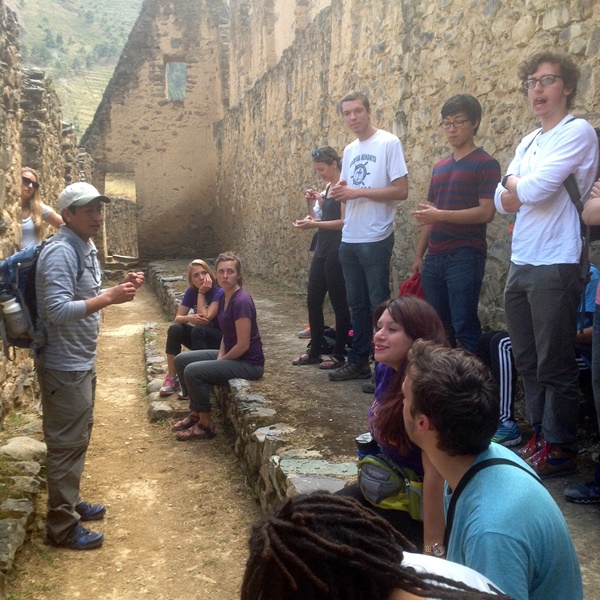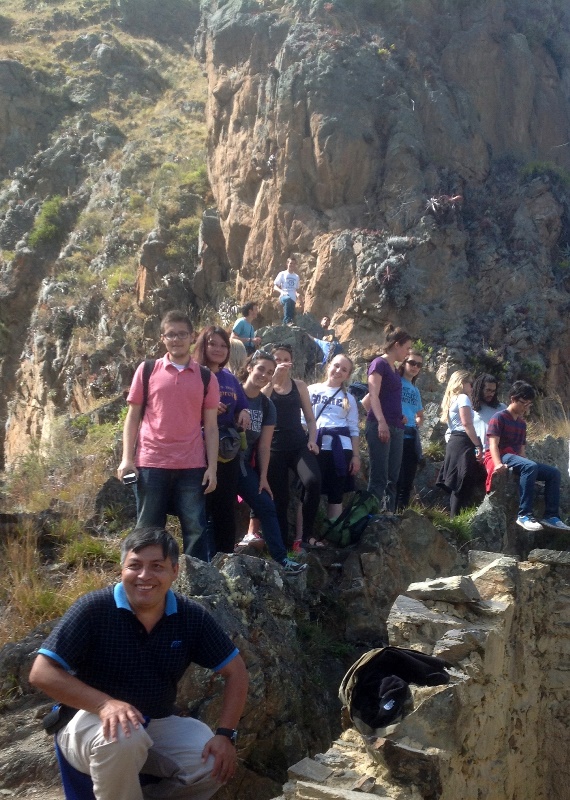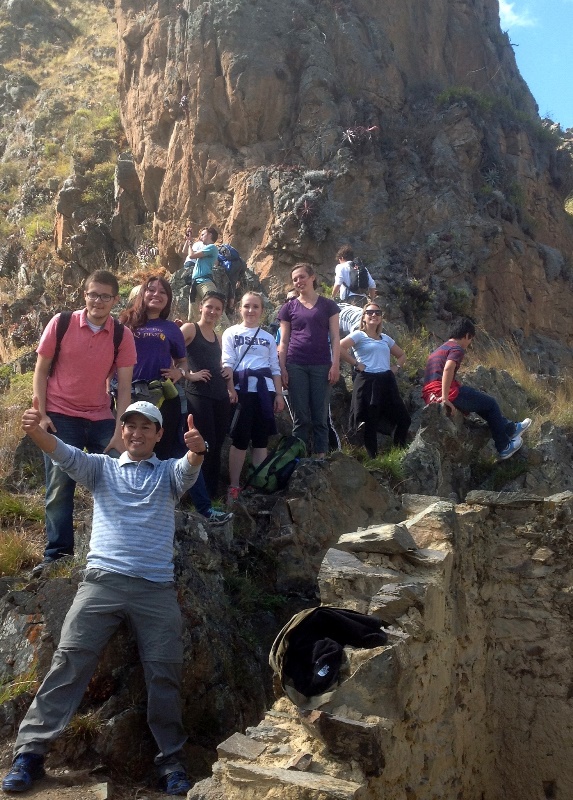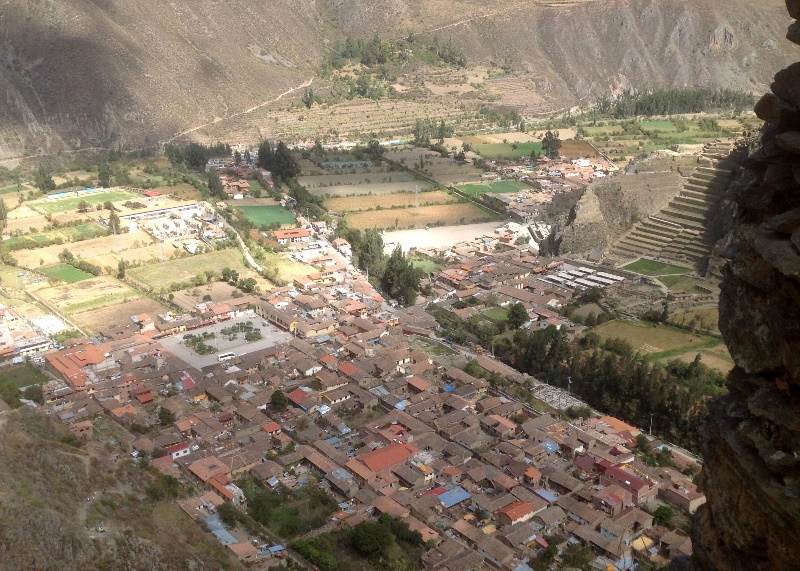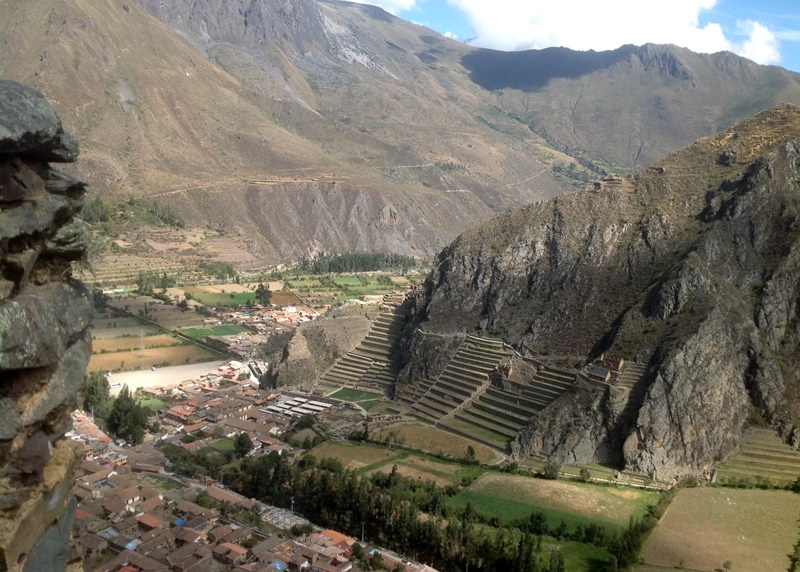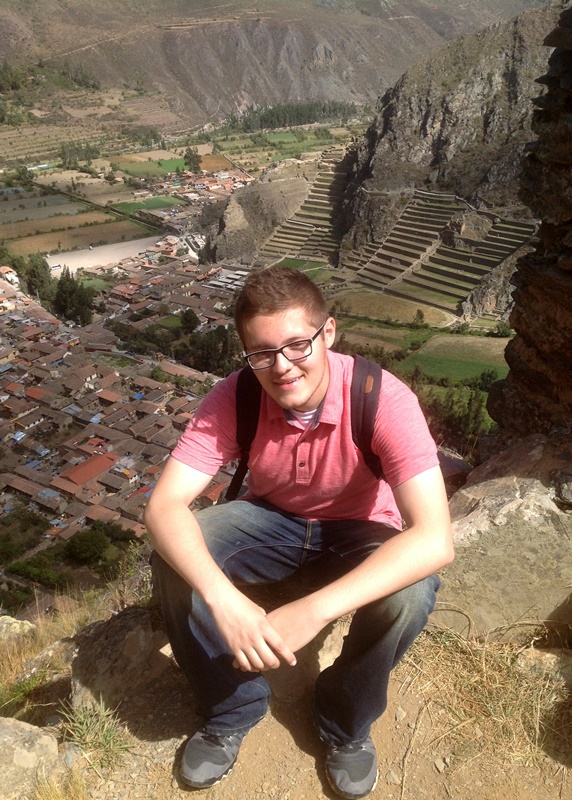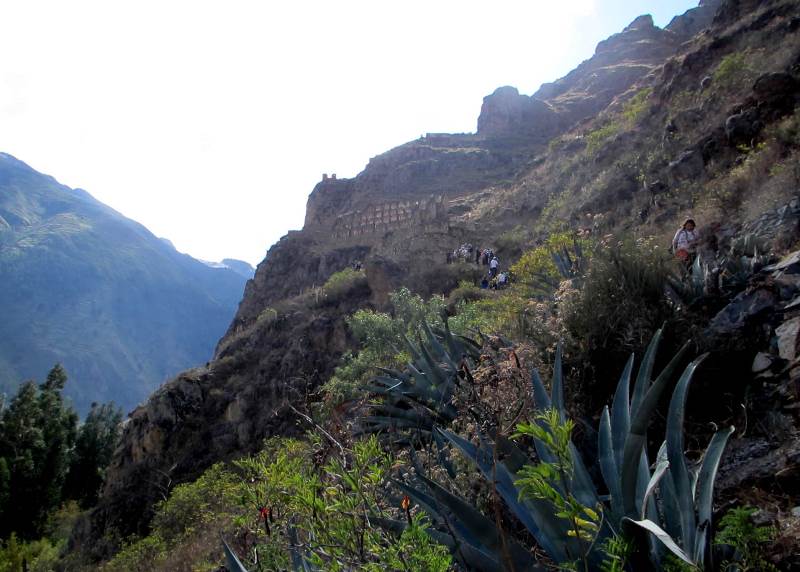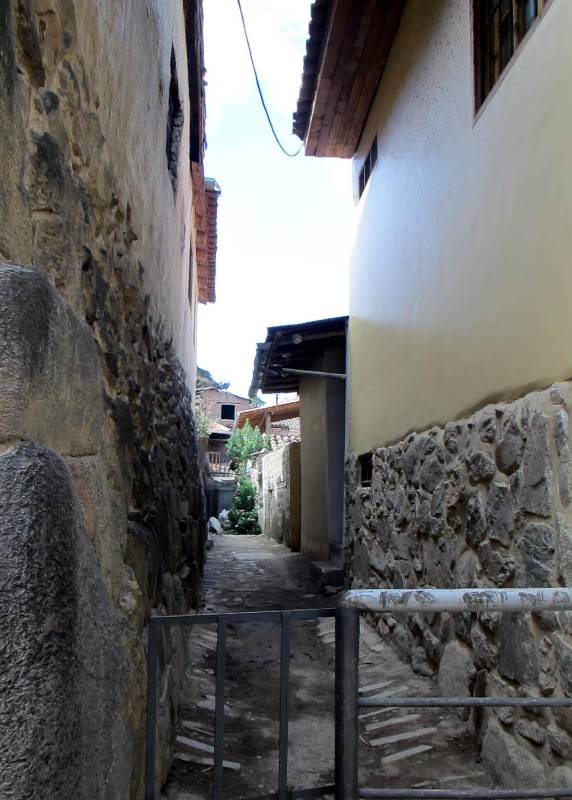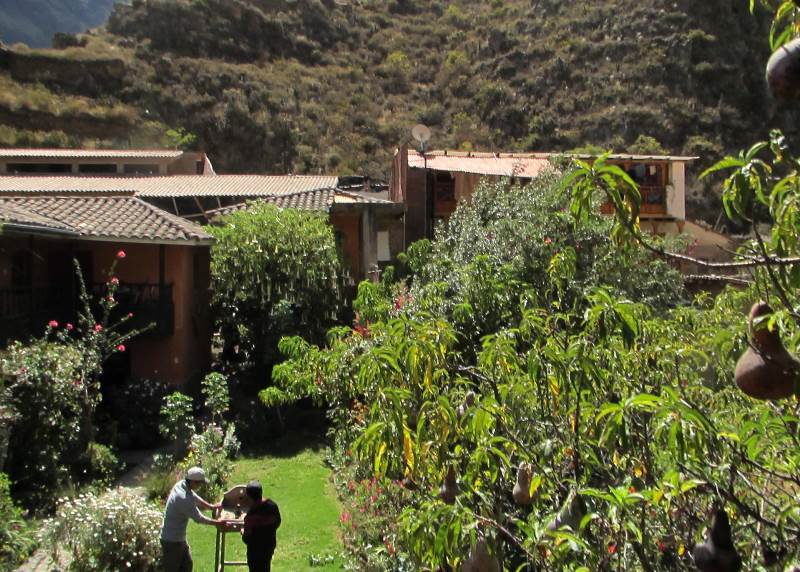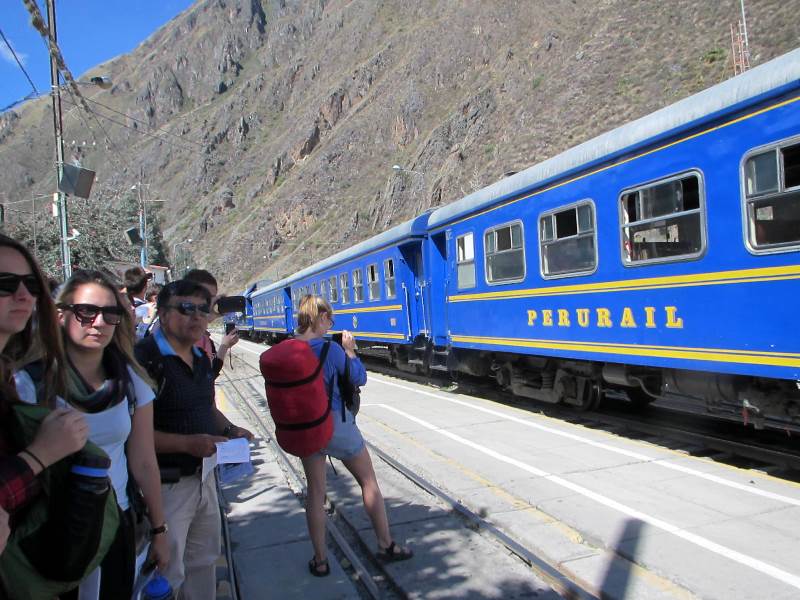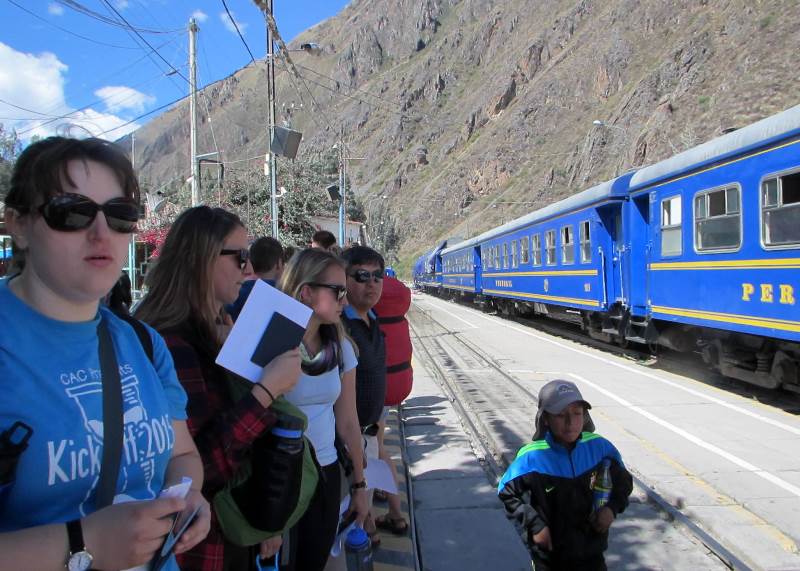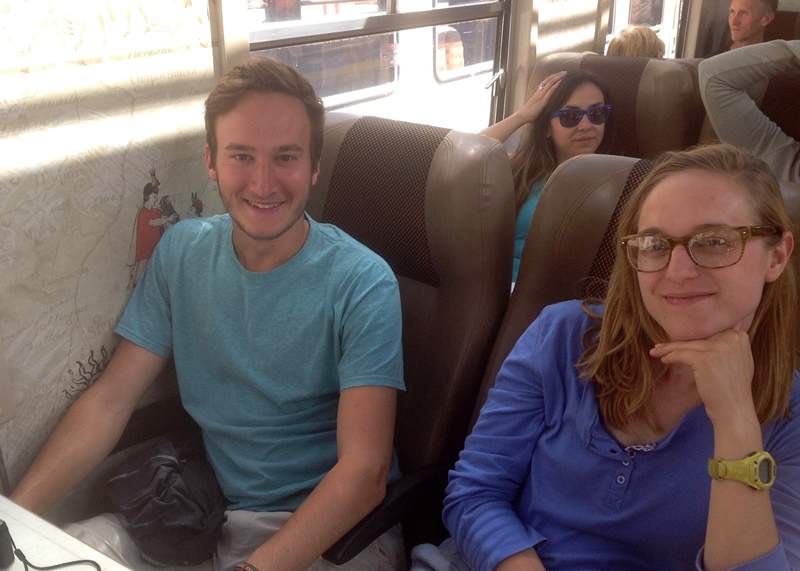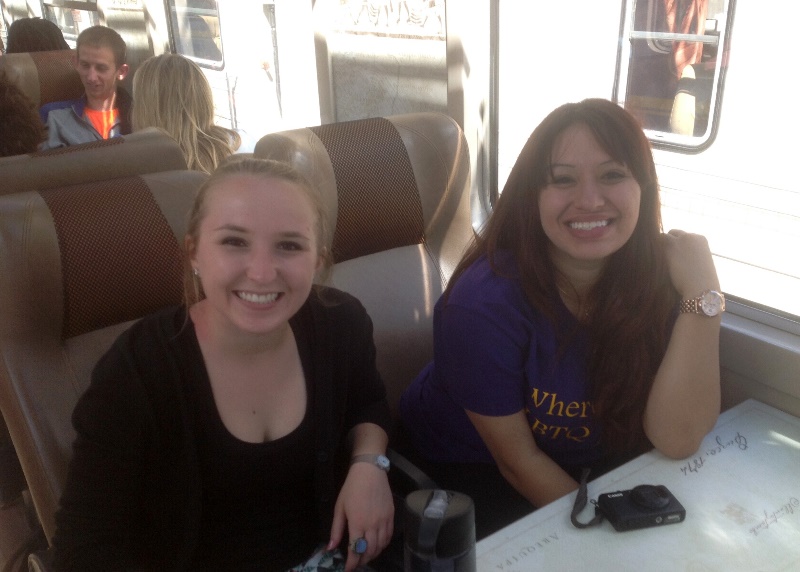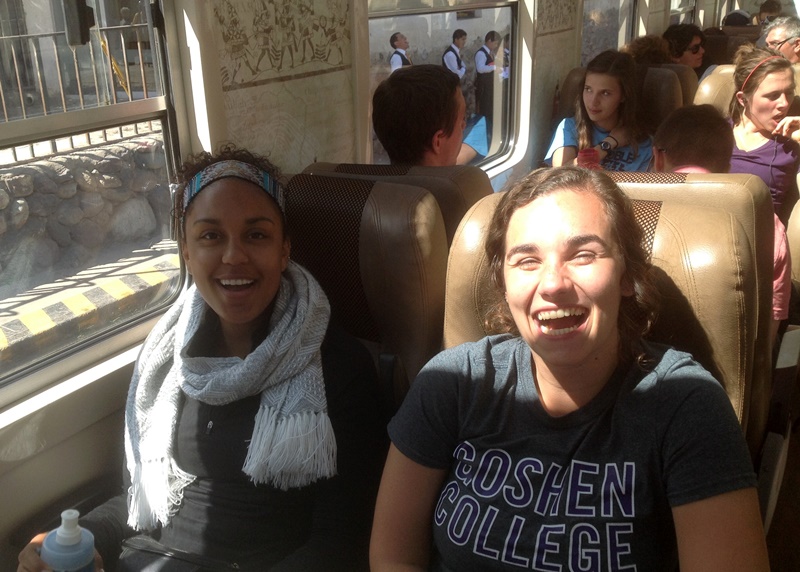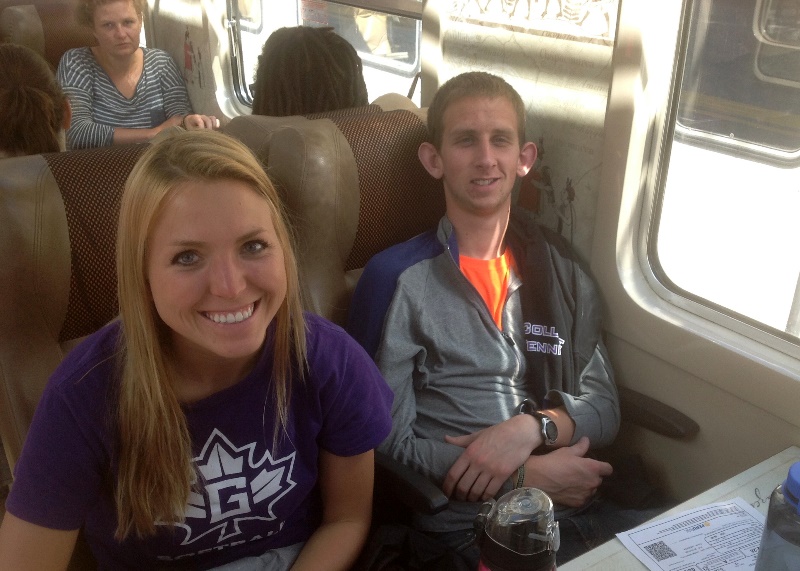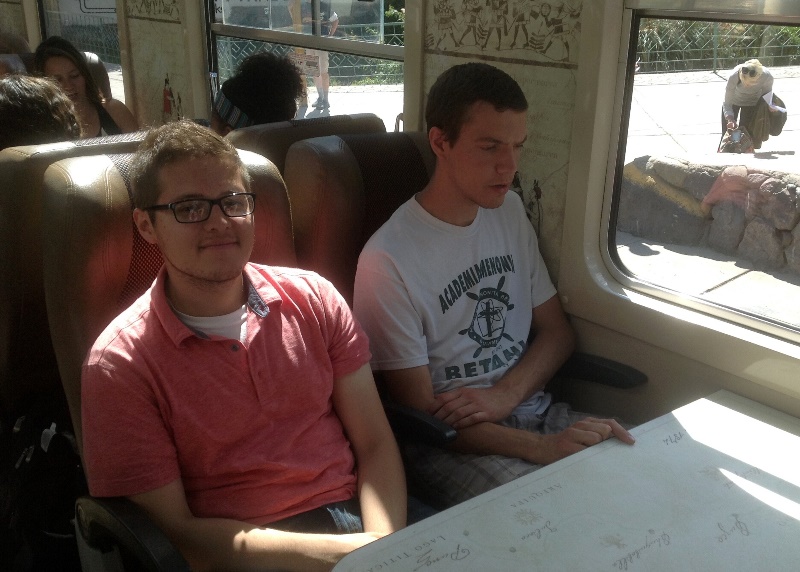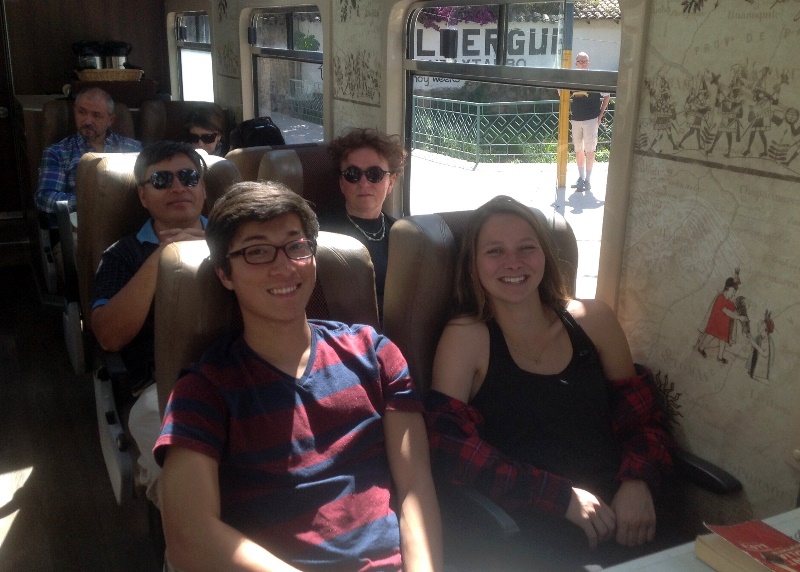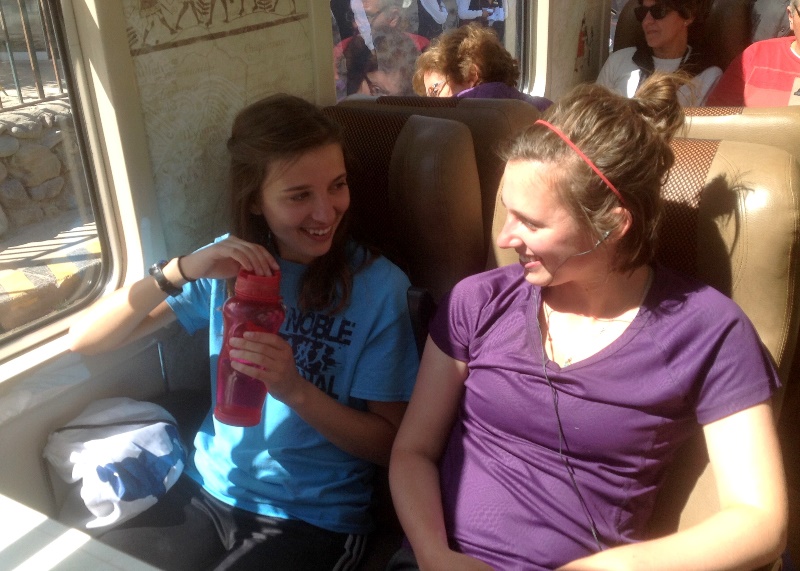Crossing the Sacred Valley: Ollantaytambo
By Karen and Duane Sherer Stoltzfus
Peru SST Co-Directors, 2014-2015
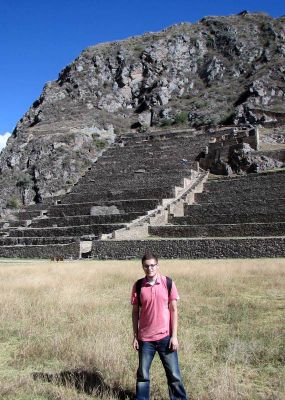
More than 500 years ago, Ollantaytambo served as an important rest stop and administrative and religious center for the Incas. For our group, it proved to be a perfect place to stop after visiting the Incan sites at Chinchero and Moray and before spending a day at Machu Picchu.
It’s an enviable rest stop (and a 90-minute train ride from the town of Machu Picchu Pueblo, or Aguas Calientes, from which you can climb or take a bus to Machu Picchu). The weather is warmer here than in most of the Andes due to its relatively low elevation (2,800 meters, or about 9,186 feet) and placement in a protected valley.
Wherever you walk, along narrow cobblestone streets, you hear the sound of water; whether from the river that runs along the half-mile road that leads to the train station, or from the mountain water that runs through the curbside, rock-lined channels of the residential quarters.
Tuesday morning, after a substantial breakfast that included pancakes, our second guide for the trip, Rubén, led the way up to the huge fortress (Temple Hill) that overlooks the town, a fortress fashioned by Inca leaders as a defense against invaders and a place for rest and religious observance in the center of what local people call the Sacred Valley. Although unfinished, the stonework is impressive.
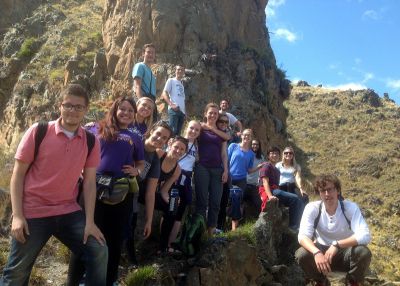
Rubén noted that the rock for the walls was quarried from a mountainside six kilometers away, each block pulled by rope across makeshift rollers of wood or small stones. The arrival of the Spaniards ended the work, prematurely. He showed us a mighty rock, resting alone, that never made it to a wall.
By midmorning we had returned to town, poised for our major hike of the day. We walked up a steep, narrow trail to reach the colcas, or storage houses, that the Incas placed high above Ollantaytambo, an ideal setting in which to preserve corn and potatoes and alpaca jerky.
We could see agricultural terraces spread all over the hillsides below us, taking advantage of micro climates in which to grow different varieties of crops. Peru, the land of the first potato, has developed more than 500 varieties of potatoes (estimates run as high as 3,000) and 200 varieties of corn.
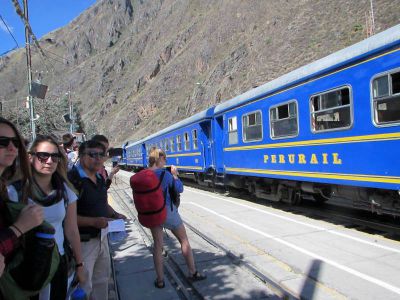
After a lunch of soup and as much bread as we could eat, we made our way to the station to catch our train to Machu Picchu, which is the name of the Incan mountaintop retreat, the mountain itself and the town at the base of the mountain. Once there, students were given money to purchase a picnic lunch for their day at Machu Picchu (the mountaintop retreat).
We met later in the evening for a cozy supper together in a menú restaurant (which provided table games). We went back to our hostal, Angie’s Inn, to get a good night’s sleep before the 5 a.m. wake-up call for the bus ride to Machu Picchu.
